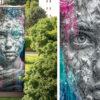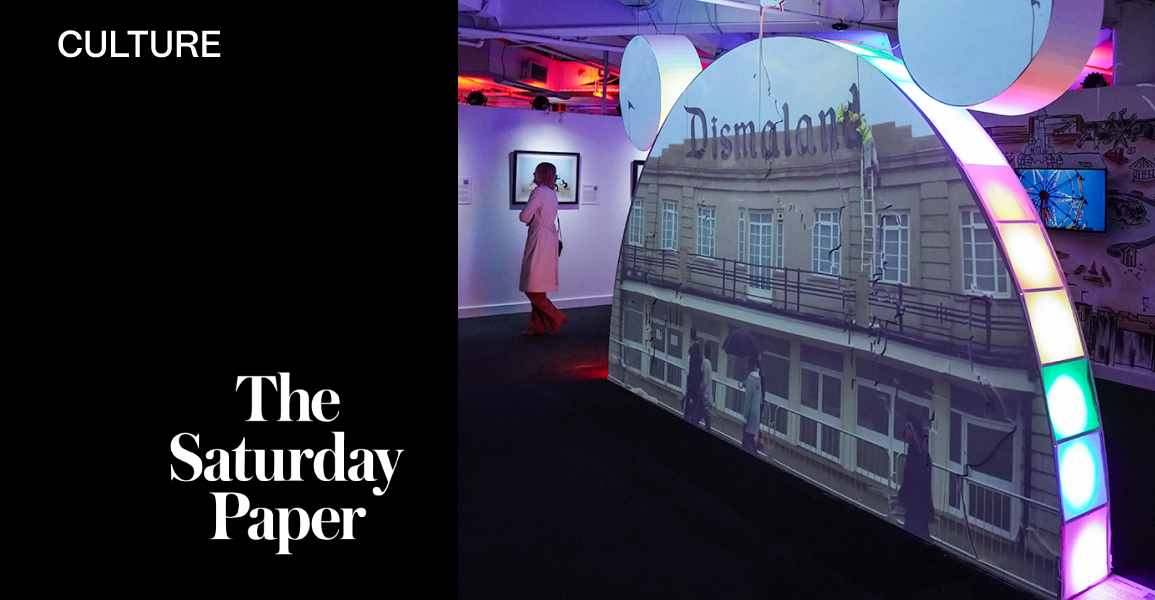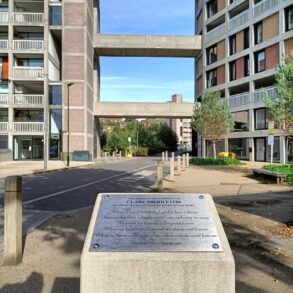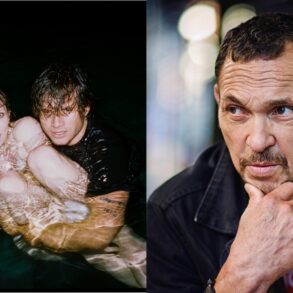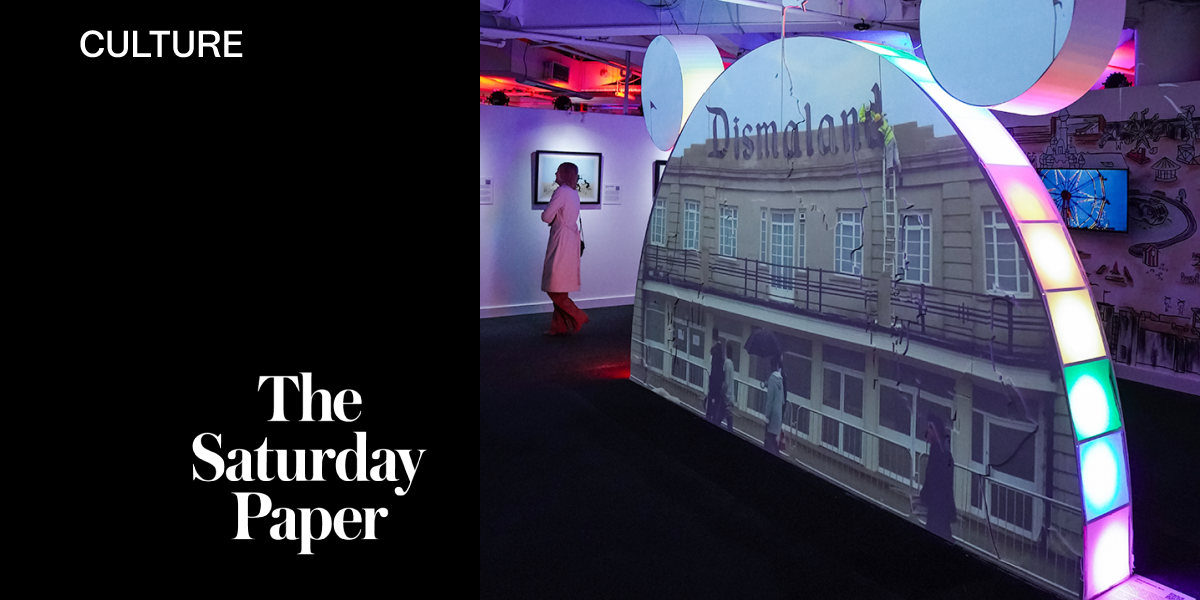
Banksy – impish Bristol (probably) prankster, multimillionaire street artist, miraculously anonymous after more than 25 years – has rarely shown his work in a gallery context.
He has a handful of times: once when sticking a piece of his to a wall at the Tate and waiting for any curator to notice; another, painting an elephant to match the wallpaper of a show space in Los Angeles. When Banksy does engage with the art world, with which he has a fraught if not profoundly bountiful relationship, it is to do something like sell a piece at Sotheby’s for £1 million, only to set it to self-destruct after the hammer fell, shredding itself to pieces and accruing almost 20 times its sale value in the process.
The more an artist tries to resist being subsumed by the monied machine of mass culture, the more they become entangled within it. Pop will eat itself, and that’s what Banksy has been travelling the world’s streets to make a point about for all this time.
Suffice to say he would – and does – hate the currently travelling, unauthorised exhibition of his works from a private collection, The Art of Banksy: Without Limits, on display in Sydney Town Hall.
This ersatz Banksy show includes more than 150 “pieces”. Many are without provenance and most likely fakes, others are reproductions. The press material for the show boasts of its number of attendees globally (“incredible worldwide success with over 1,650,000 visitors!”), which is a tidy little profit to have made off the work of an artist who has publicly disavowed its rogue presentation of his art. (“I … encourage anybody to take and amend my art for their own personal amusement, but not for profit or making it look like I’ve endorsed something when I haven’t. Thanks,” he writes on his website under “licensing”.)
While people who live in Sydney may have grown somehow accustomed to walking out their front door and having $50 leave their bank account, $43 for this cheaply presented and patchy tour of Banksy’s career is more than taking the piss.
The exhibition evokes a feeling akin to a first-year art school assignment where you are asked to breathlessly riff on the oeuvre of an artist you, wide-eyed young person, really, really love. It is an exercise in enthusiasm.
In its way, the show is almost charming in its undying adoration of Banksy. Banksy is SUBVERSIVE and FUNNY and AWESOME. While certainly one way to appreciate his tendency to engage with ideas of police corruption, state violence, homelessness, war and the hollow march of capitalism, it is perhaps not what he would want to have pointed out to a viewer quite so literal-mindedly. It is the kind of didactic presentation of art he has been working in opposition to his entire career.
Something Banksy has equally long railed against is the exclusive snobbishness of the art world and of writing about it, which is why, he has often said, he became a street artist and not a “fine” artist in the first place: he wanted his work to be accessible to anyone who happened upon it.
As his notoriety grew and his work became more ambitious in its scope – installations on walls in active war zones in the Middle East and Ukraine, for example – auction houses began to sell entire concrete slabs torn from walls on which new Banksy work had appeared, in order to sell them for many millions of dollars. Banksy despaired of this, less for people profiting hugely off his work without him seeing any money but also because this took his work from the public context in which it was intended to be an ephemeral and delightful encounter and made it viewable only to private collectors.
The further Banksy was absorbed into the culture he satirised, the more his work became referential to the absurdities of the contemporary art market, culminating in a piece you can see a copy of at Sydney Town Hall in which an auctioneer sells a gilt-edged framed piece to a heaving crowd, the canvas reading in graffiti style, “I can’t believe you morons actually buy this shit”. Painted in 2006, it was many years later bought for US$95,000 and burned. Its burning at the hands of a bunch of crypto investors was then live streamed and its image before its destruction made into an NFT which sold for $380,000, a sequence of events that not even Banksy could have ever darkly imagined. It currently sits on the Ethereum blockchain where its value, opaquely, is 229 ETH, or roughly $571,000. It has not traded since its original sale in 2021.
Does it matter to be standing in front of a work (Morons) that is likely fake in an exhibit that Banksy has denounced? Might not some part of Banksy maybe enjoy that there is a way – even a possibly forged way – for people to see his work, when they have a relatively slim chance of ever seeing one in the wild?
Banksy’s street art, when it does appear, is usually either stolen, vandalised or painted over – apart from the occasions where local city councils have recognised a work’s value and gone to considerable lengths to preserve it behind Perspex, monitored by CCTV. Our life under the surveillance state is one of Banksy’s favourite subjects to skewer.
If this is the only way people might “see” Banksy for the first time, even taken wildly out of context, is there not value in them being provoked, delighted, entertained by what he makes? It is fun, in one instance of his certified work, to see in the flesh some of the ephemera from the Dismaland Bemusement Park exhibition from 2015, originally installed temporarily in Weston-super-Mare in Somerset.
One might argue that other ways exist to access Banksy’s art that do this better – several of his own books, for example, and the brilliant “documentary” Exit Through the Gift Shop, which he directed. Then there are the dozens of websites dedicated to painstakingly photographing and recording the existence and location of all of his public pieces.
These charitable thoughts of Without Limits do evaporate when, at the end, you arrive at a very sad, even dismal, gift shop. There you can buy poorly made knock-off Banksys on a mug, or as a tote bag or poster. He will not see any of the money made from his copyright being violated. In the guidebook available to purchase there is a note on the insert cover that reads, “Reproduction of ‘The Art of Banksy’ exhibition, in any form, without prior permission is strictly prohibited.” Sorry about that.
In 2003 Banksy travelled to Australia as a guest of the Semi Permanent design conference. It was a time when print editions of his works still sold cheaply through the website Pictures on Walls and his pieces were yet to sell for many thousands of pounds at auction (by 2007, however, a print of Girl with Balloon, the same work he would shred in 2018, sold at Sotheby’s for £37,200, while one of his paintings, Bombing Middle England, fetched £102,000).
In Sydney he left a “This is not a photo opportunity” stencil at a particularly scenic vantage point on the harbour. It might still be there, or not, to find. But even if you can’t quite see it, you can enjoy the free view.
This article was first published in the print edition of The Saturday Paper on
February 17, 2024 as “Banksy robbers”.
For almost a decade, The Saturday Paper has published Australia’s leading writers and thinkers.
We have pursued stories that are ignored elsewhere, covering them with sensitivity and depth.
We have done this on refugee policy, on government integrity, on robo-debt, on aged care,
on climate change, on the pandemic.
All our journalism is fiercely independent. It relies on the support of readers.
By subscribing to The Saturday Paper, you are ensuring that we can continue to produce essential,
issue-defining coverage, to dig out stories that take time, to doggedly hold to account
politicians and the political class.
There are very few titles that have the freedom and the space to produce journalism like this.
In a country with a concentration of media ownership unlike anything else in the world,
it is vitally important. Your subscription helps make it possible.
This post was originally published on this site be sure to check out more of their content.


